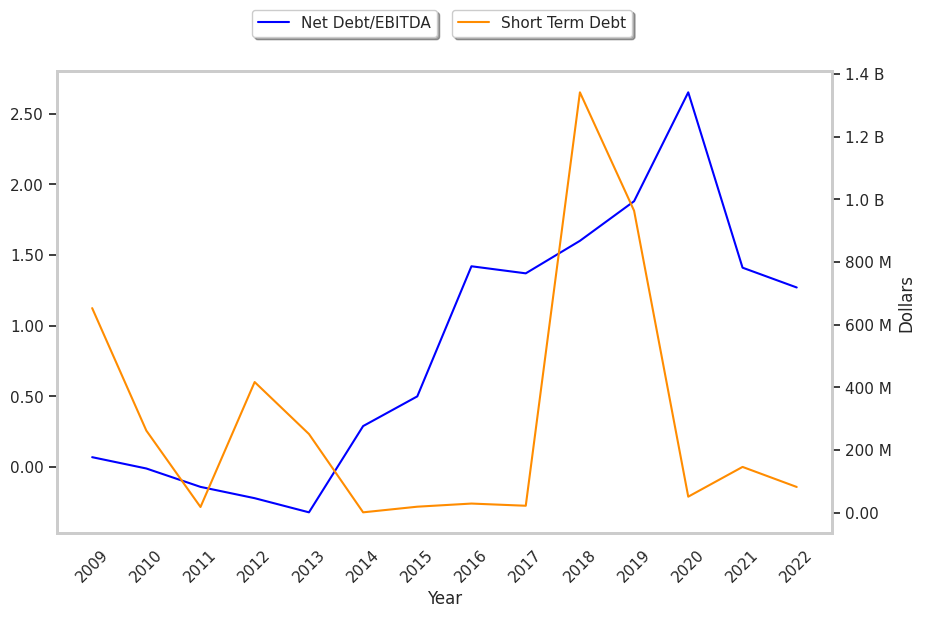FedEx meets some but not all of Benjamin Graham's requirements for a defensive stock. The Airlines company does not offer a large enough margin of safety for cautious investors, but it does have many qualities that may interest more enterprising investors.
FedEx Is Probably Overvalued
Graham devised the below equation to give investors a quick way of determining whether a stock is trading at a fair multiple of its earnings and its assets:
√(22.5 * 6 year average earnings per share (11.43) * 6 year average book value per share (103.859) = $170.99
After an impressive 67.0% performance over the 12 months, FedEx is now trading well over its price because its Graham number is 47.8% above today's share price of $252.8. Even though the stock does not trade at an attractive multiple, it might still meet some of the other criteria for quality stocks that Graham listed in Chapter 14 of The Intelligent Investor.
Impressive Revenues, Consistent Profitability, and a Growing Dividend Imply Value
FedEx’s average sales revenue over the last 6 years has been $104.97 Billion, so by Graham’s standards the stock has sufficient revenues to make it worthy of investment. When published in 1972, Graham’s threshold was $100 million in average sales, which would be the equivalent of around a half million dollars today.
Ben Graham believed that a margin of safety could be obtained by investing only in companies with consistently positive retained earnings. Retained earnings represent the cumulative net earnings or (deficit) left to equity holders after dividends have been paid out. FedEx had positive retained earnings from 2009 to 2023 with an average of $21.79 Billion over this period.
Ben Graham would also require a cumulative growth of Earnings Per Share of at least 30% over the last ten years.To determine FedEx's EPS growth over time, we will average out its EPS for 2009, 2010, and 2011, which were $1.10, $0.89, and $1.57 respectively. This gives us an average of $1.19 for the period of 2009 to 2011. Next, we compare this value with the average EPS reported in 2021, 2022, and 2023, which were $19.45, $14.33, and $15.48, for an average of $16.42. Now we see that FedEx's EPS growth was 1279.83% during this period, which satisfies Ben Graham's requirement.
Negative Current Asset to Liabilities Balance and an Average Current Ratio
Graham sought companies with extremely low debt levels compared to their assets. For one, he expected their current ratio to be over 2 and their long term debt to net current asset ratio to be near, or ideally under, under 1. FedEx fails on both counts with a current ratio of 1.4 and a debt to net current asset ratio of -0.5.
Conclusion
FedEx offers a decent combination of value, growth, and profitability. These factors imply that the investment offers a decent margin of safety — especially if the shares are bought during a sell-off.
| 2017-07-17 | 2018-07-16 | 2019-08-15 | 2020-07-20 | 2021-07-19 | 2022-07-18 | |
|---|---|---|---|---|---|---|
| Revenue (MM) | $60,319 | $65,450 | $69,693 | $69,217 | $83,959 | $93,512 |
| Gross Margins | 28.0% | 27.0% | 26.0% | 28.0% | 30.0% | 28.0% |
| Operating Margins | 8% | 8% | 7% | 4% | 7% | 7% |
| Net Margins | 5.0% | 7.0% | 1.0% | 2.0% | 6.0% | 4.0% |
| Net Income (MM) | $2,997 | $4,572 | $540 | $1,286 | $5,231 | $3,826 |
| Net Interest Expense (MM) | -$479 | -$510 | -$529 | -$617 | -$741 | -$636 |
| Depreciation & Amort. (MM) | -$2,995 | -$3,095 | -$3,353 | -$3,615 | -$3,793 | -$3,970 |
| Earnings Per Share | $11.1 | $16.81 | $2.04 | $4.91 | $19.59 | $14.12 |
| EPS Growth | n/a | 51.44% | -87.86% | 140.69% | 298.98% | -27.92% |
| Diluted Shares (MM) | 270 | 272 | 265 | 262 | 267 | 271 |
| Free Cash Flow (MM) | $10,046 | $10,337 | $11,103 | $10,965 | $16,019 | $16,595 |
| Capital Expenditures (MM) | -$5,116 | -$5,663 | -$5,490 | -$5,868 | -$5,884 | -$6,763 |
| Net Current Assets (MM) | -$19,851 | -$19,573 | -$23,560 | -$38,859 | -$38,029 | -$40,690 |
| Long Term Debt (MM) | $14,909 | $15,243 | $16,617 | $21,952 | $20,733 | $20,182 |
| Net Debt / EBITDA | 1.37 | 1.6 | 1.88 | 2.65 | 1.41 | 1.27 |



